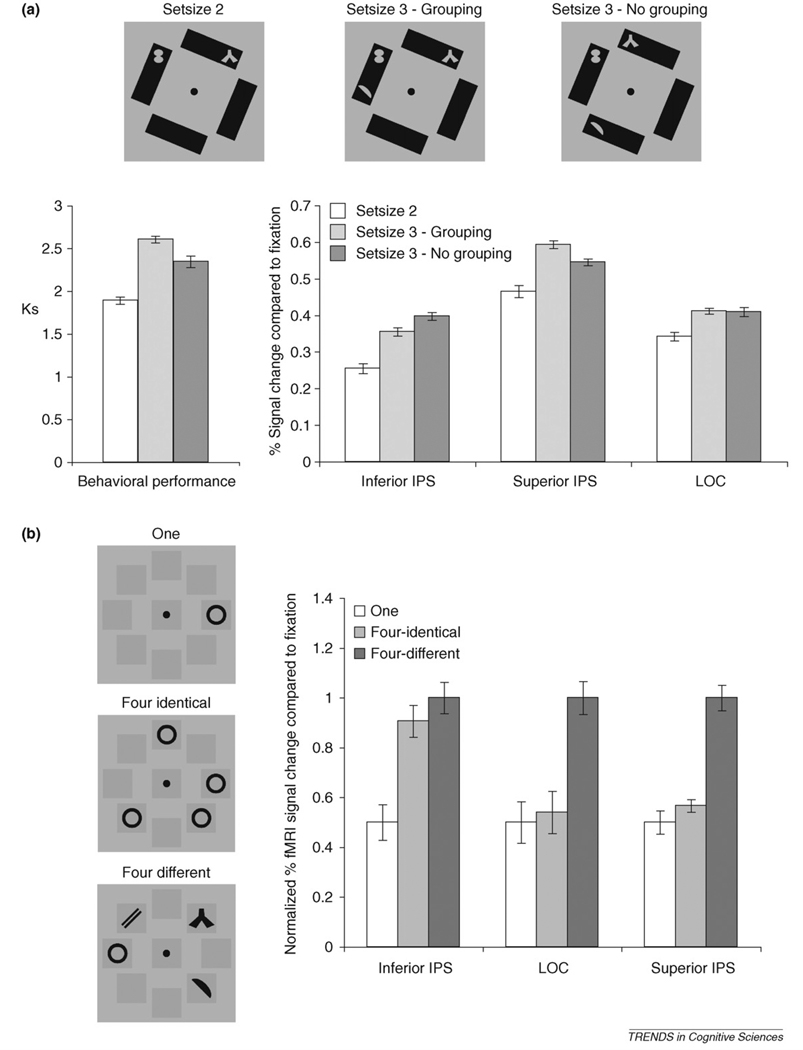Figure 3.
(a) In this experiment [6], observers viewed 2 or 3 briefly appearing grey shapes and performed change detection. The display background determined shape grouping although it was task irrelevant. Inferior IPS response was lower for the three grouped than for the three ungrouped shapes. This grouping effect reversed direction in behavioral VSTM capacity estimates and superior IPS responses (but was absent in the LOC), showing a VSTM grouping benefit. (b) In this experiment [4], observers viewed either one black shape, four identical black shapes or four different black shapes in a sample display and performed change detection. Although responses for the two four-object conditions were similar in the inferior IPS, those for the one and the four-identical conditions were similar in the LOC and the superior IPS. These results support object individuation in the inferior IPS and object identification in the LOC and the superior IPS (normalized functional magnetic resonance imaging [fMRI] results were shown here, in which the averaged responses for the one and the four-different conditions were anchored to be 0.5 and 1, respectively).

